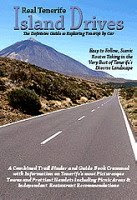 We’ve recently been writing a series of short guides to many of Tenerife’s towns and resorts.
We’ve recently been writing a series of short guides to many of Tenerife’s towns and resorts. I’ve got an extensive library of photographs for most places on Tenerife, but the job made me realise that a couple of years had passed since I’d taken new photos of some locations.
In that period I’d been concentrating more on fiestas, events and walking locations rather than the towns and villages, so I decided it was time to bring my photo library up to date.
When we wrote the in depth location reports for Living Tenerife Magazine, part of the remit was to provide photographs which made each location look as good as possible. Sometimes this was easy – I could have sent the cat with the camera and the results would be great; sometimes it took a bit of creative thinking – a flowering oleander, or hibiscus bush could be a godsend for partly obscuring an eyesore which could ruin an otherwise attractive scene; and sometimes I’d spend ages staring and staring at places to try to spot something that looked remotely photogenic – an unusual doorknob, a bright flower in a glass on a restaurant table…anything.
Anyway, having been spoiled with the spectacle and colour of numerous fiestas and the drama of the epic countryside I’d partly forgotten that some places, like some people, don’t pose well.
I know my personal preferences are partly to blame. I like old places whose character positively oozes from the brick and plaster work so locations like La Orotava, La Laguna, Garachico, Santa Cruz and parts of Puerto de la Cruz are on the whole easy. Imaginative modern architecture is also good, so that’s another plus for Santa Cruz.
Marinas and harbours are usually good subjects, especially if there’s also a resident fishing community – Los Cristianos, Las Galletas, El Médano and to a lesser extent Puerto Colón, Playa San Juan and Los Gigantes (but that does have those stunning cliffs).
A nice beach can make up for dull characterless buildings, lack of expanses of greenery or unique individual touches – parts of Costa Adeje and Playa de las Américas; however, in the more upmarket areas of both, luxury hotels with individualistic architectural styles, trendy shopping centres and pavement cafés have added some interest.
But for me there are a couple of places on Tenerife which have me praying for photographic inspiration. Resorts where there are no beaches, the architecture is decidedly seventies, there are no plazas, quaint or otherwise and there’s an absence of creativity in the décor of the restaurants and cafés.
They are nice places to visit on holiday I’m sure; plenty of decent restaurants and loads of sunshine, but for the life of me, I can’t find anything that gives either an individual character.
And these places are…well it wouldn’t be fair to pass my photographic prejudices on to you and I actually quite like one of them despite the fact I can’t photograph it for toffee. So you’ll just have to figure it out for yourself while I try for the umpteenth time to try to take a half decent shot of the damn places.






